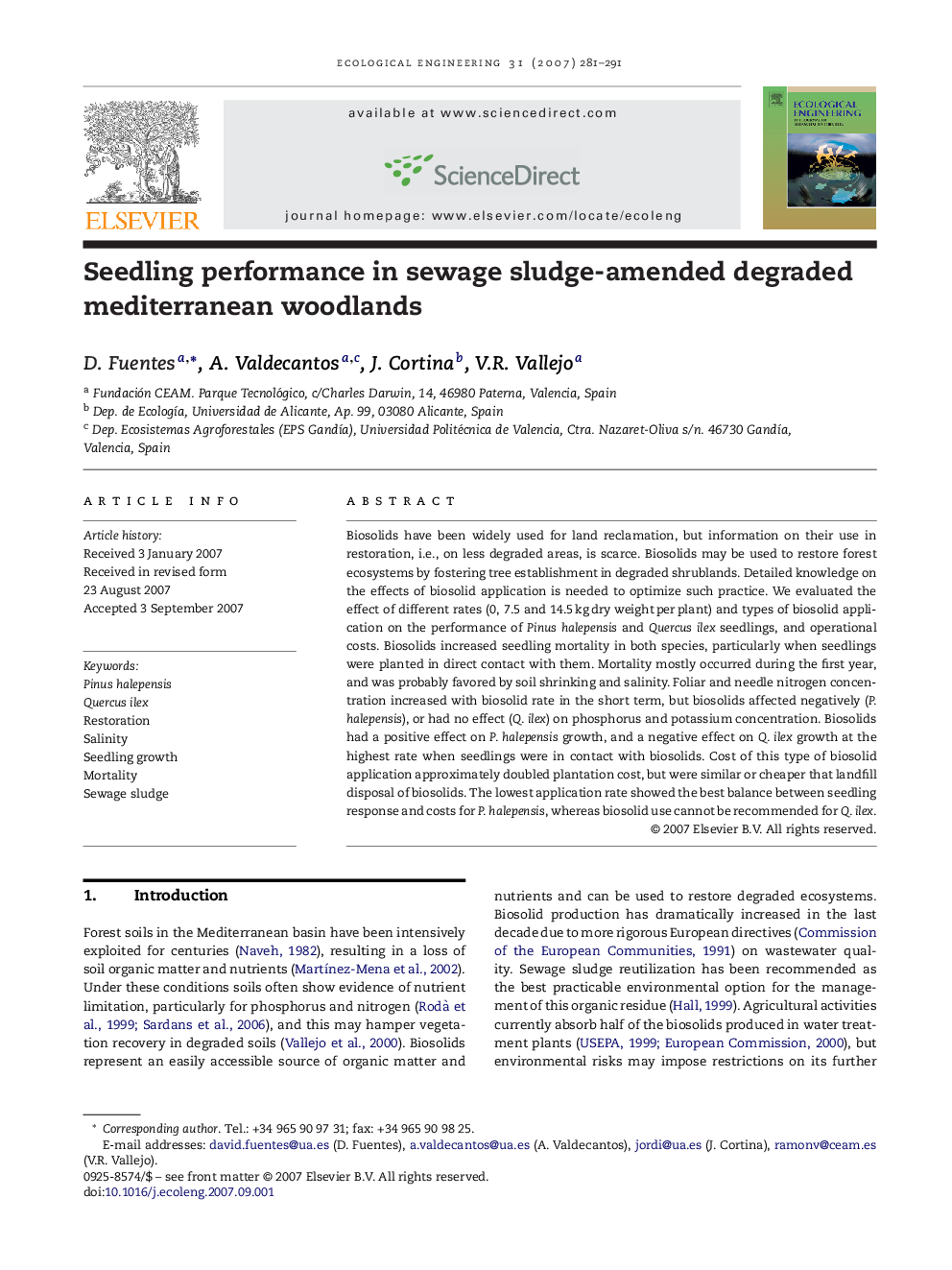| Article ID | Journal | Published Year | Pages | File Type |
|---|---|---|---|---|
| 4390912 | Ecological Engineering | 2007 | 11 Pages |
Abstract
Biosolids have been widely used for land reclamation, but information on their use in restoration, i.e., on less degraded areas, is scarce. Biosolids may be used to restore forest ecosystems by fostering tree establishment in degraded shrublands. Detailed knowledge on the effects of biosolid application is needed to optimize such practice. We evaluated the effect of different rates (0, 7.5 and 14.5 kg dry weight per plant) and types of biosolid application on the performance of Pinus halepensis and Quercus ilex seedlings, and operational costs. Biosolids increased seedling mortality in both species, particularly when seedlings were planted in direct contact with them. Mortality mostly occurred during the first year, and was probably favored by soil shrinking and salinity. Foliar and needle nitrogen concentration increased with biosolid rate in the short term, but biosolids affected negatively (P. halepensis), or had no effect (Q. ilex) on phosphorus and potassium concentration. Biosolids had a positive effect on P. halepensis growth, and a negative effect on Q. ilex growth at the highest rate when seedlings were in contact with biosolids. Cost of this type of biosolid application approximately doubled plantation cost, but were similar or cheaper that landfill disposal of biosolids. The lowest application rate showed the best balance between seedling response and costs for P. halepensis, whereas biosolid use cannot be recommended for Q. ilex.
Related Topics
Life Sciences
Agricultural and Biological Sciences
Ecology, Evolution, Behavior and Systematics
Authors
D. Fuentes, A. Valdecantos, J. Cortina, V.R. Vallejo,
